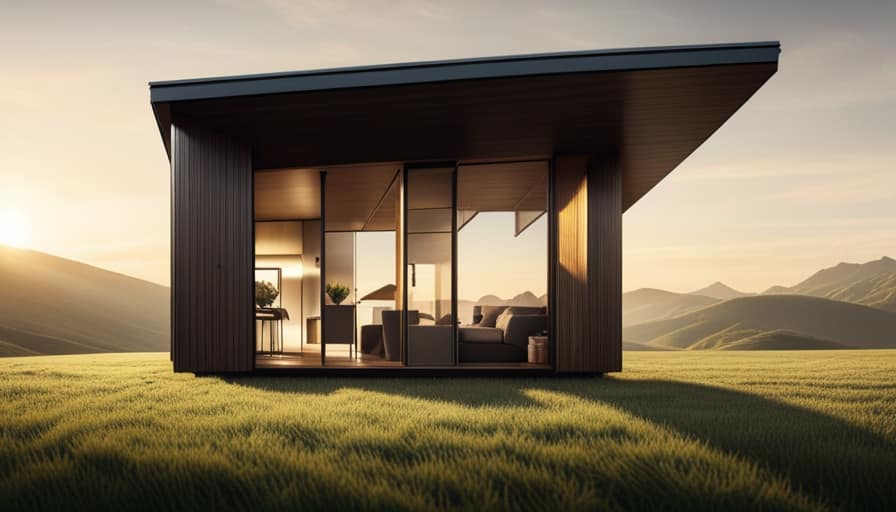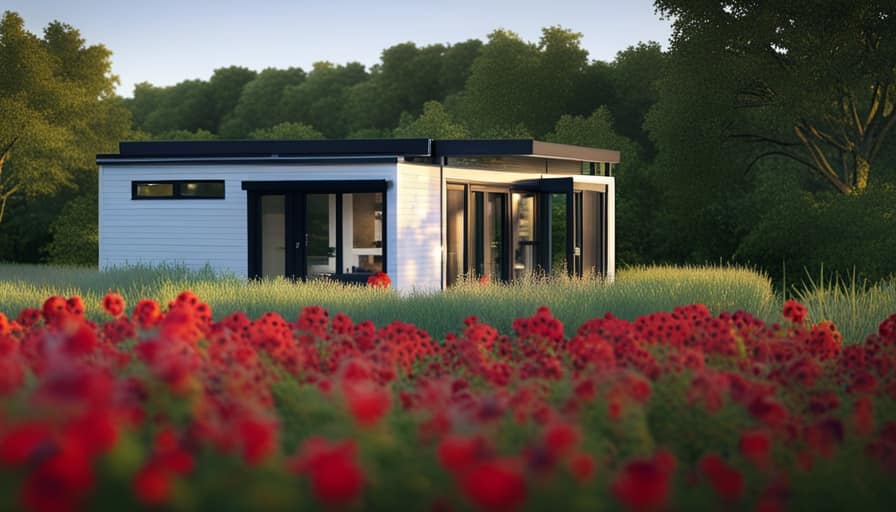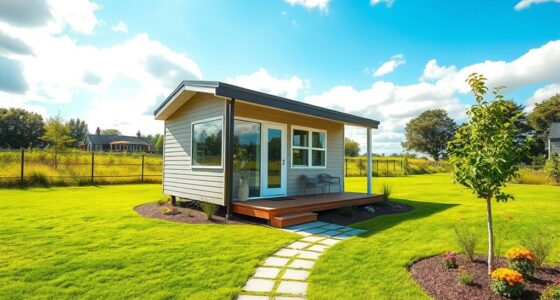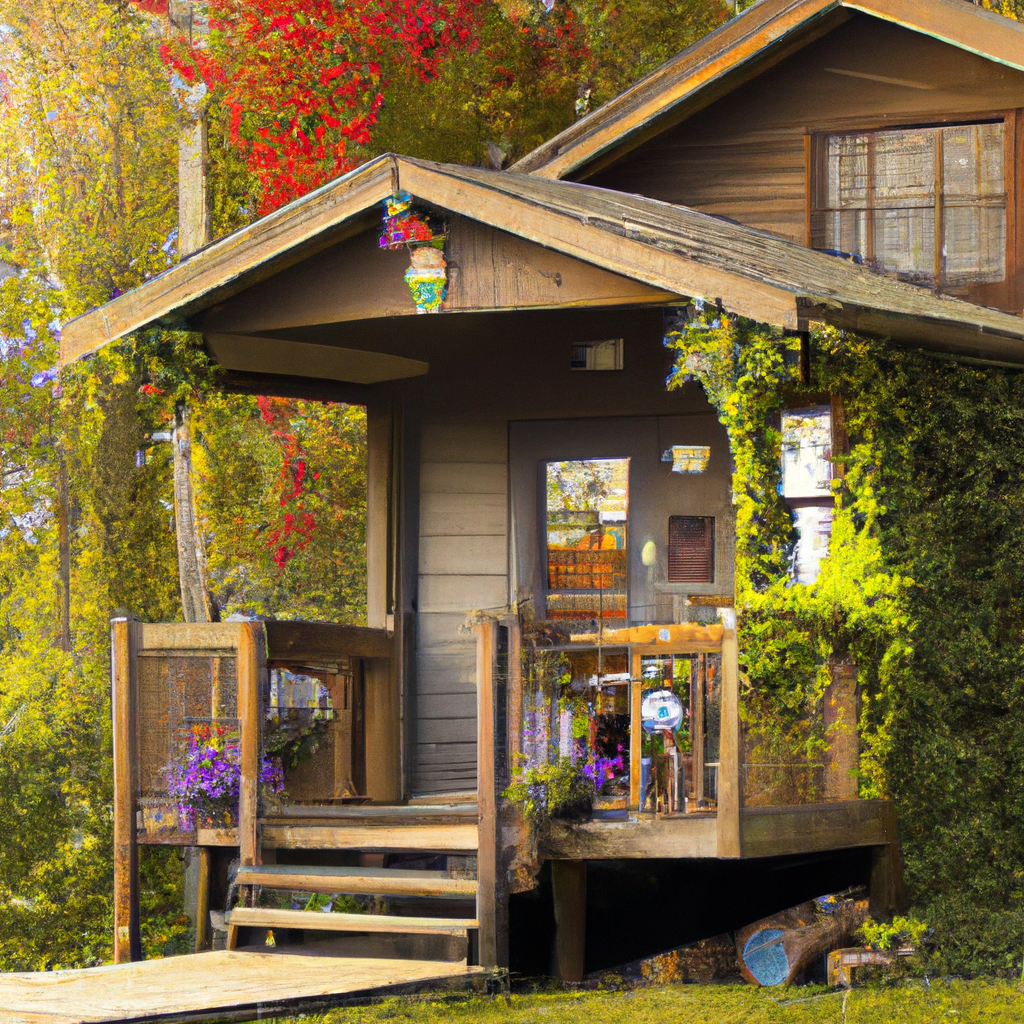I’m sure many of you have been curious about how to figure out the precise positioning of the wheels on a tiny house trailer. Well, have no fear! In this article, I will walk you through the steps of understanding wheel placement, reviewing blueprints and specifications, and using measurement methods.
We’ll also explore visual indicators and markers on the trailer, and even consult with experts and manufacturers for accuracy. By the end, you’ll have all the knowledge you need to confidently position those wheels on your tiny house trailer.
Let’s get started!
Key Takeaways
- Proper wheel placement is crucial for a safe and efficient towing experience.
- Trailer blueprints and specifications provide important information about dimensions and wheel position.
- Measurement techniques, such as measuring the distance between axles and the distance from the front of the trailer to the center of each wheel, ensure correct positioning.
- Visual indicators and markers on the trailer can help determine the location of the wheels, but consulting with experts and trailer manufacturers is important for accurate placement.
Understanding the Importance of Wheel Placement
I can’t stress enough the importance of knowing where the wheels are located on a tiny house trailer. Proper wheel placement is crucial for a safe and efficient towing experience.
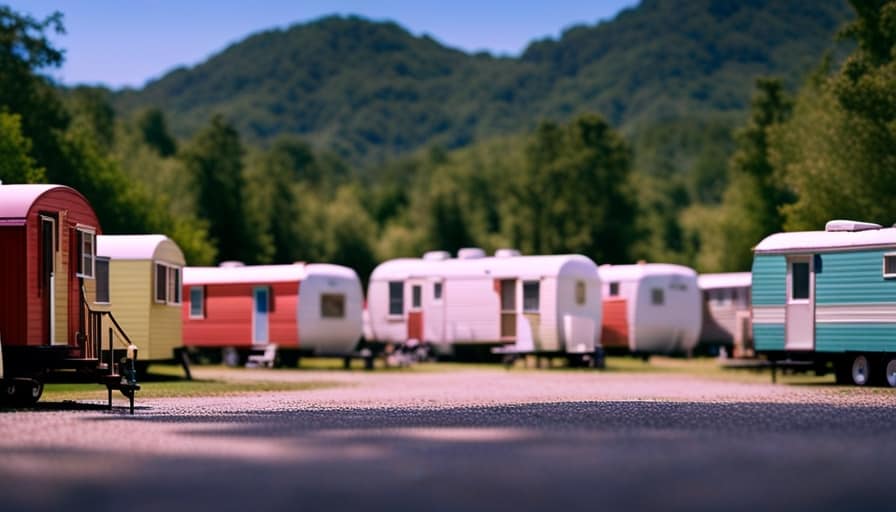
When it comes to wheel installation, it’s essential to consider trailer weight distribution. The weight of the tiny house should be evenly distributed over the trailer axles to ensure stability on the road. Uneven weight distribution can lead to poor handling, increased wear on tires, and even accidents.
To achieve proper weight distribution, it’s recommended to position the wheels closer to the center of the trailer. This will help distribute the weight evenly and maintain balance during towing.
Additionally, regular inspections and maintenance of the wheels and tires are necessary to ensure optimal performance and safety on the road.
Examining Trailer Blueprints and Specifications
By examining the trailer blueprints and specifications, you can determine the exact location of the wheels on a tiny house trailer. Analyzing the structural integrity and considering weight distribution are essential aspects of this examination process. The blueprints provide detailed information about the trailer’s dimensions, including the length, width, and height. They also indicate the position of the axles and the distance between them. By referring to the specifications, you can identify the weight capacity of each axle and ensure that it meets the requirements for your tiny house. Additionally, the specifications may provide information on the trailer’s suspension system, brakes, and other important features.
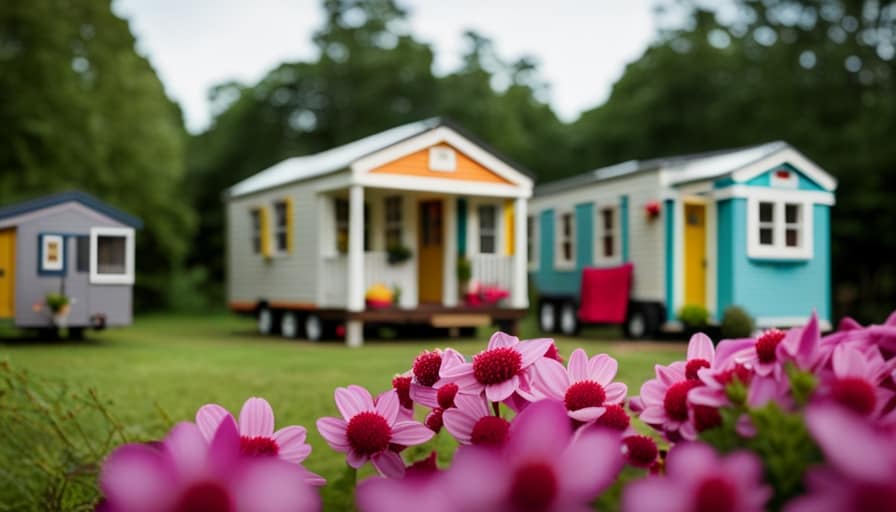
To further illustrate the significance of examining trailer blueprints and specifications, let’s take a look at the following table:
| Specification | Description |
|---|---|
| Length | The overall length of the trailer |
| Width | The width of the trailer |
| Height | The height of the trailer |
| Wheel Position | The exact location of the wheels on the trailer |
This table highlights the key specifications that contribute to determining the location of the wheels on a tiny house trailer. By thoroughly analyzing the blueprints and specifications, you can ensure proper wheel placement, which is crucial for the stability and safety of your tiny house.
Utilizing Measurement Techniques for Wheel Positioning
With the use of a measuring tape and a level, I can accurately determine the positioning of the wheels on a tiny house trailer. Measuring tools are essential for ensuring precision in this process.
First, I measure the distance between the front and rear axles to determine the trailer’s wheelbase. This measurement is crucial for calculating weight distribution and ensuring stability during transportation.
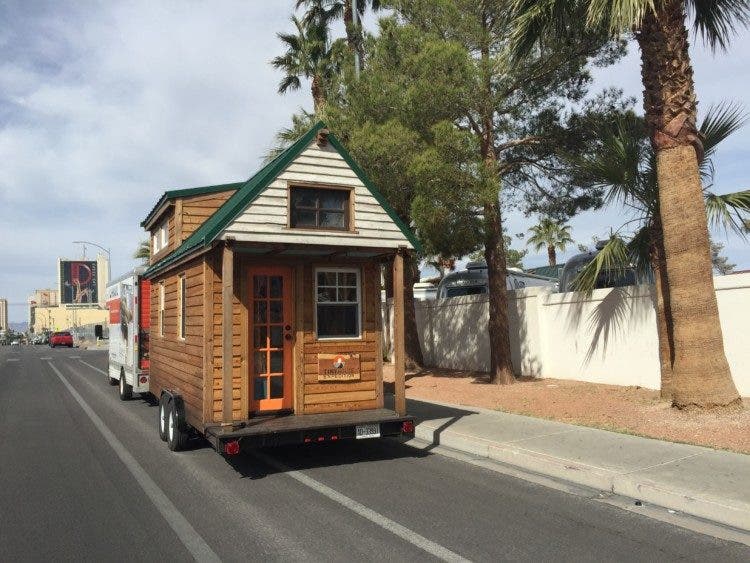
Next, I measure the distance from the front of the trailer to the center of each wheel. This allows me to determine the correct positioning of the wheels and ensure proper weight distribution.
Using a level, I ensure that the trailer is perfectly level before measuring the distance from the ground to the bottom of each wheel.
These precision techniques guarantee that the wheels are correctly positioned, providing a safe and balanced trailer for the tiny house.
Exploring Visual Indicators and Markers on the Trailer
The visual indicators and markers on the trailer provide valuable information about the location of the wheels. By identifying common visual indicators on tiny house trailers, you can easily determine where the wheels are located. These indicators can include visible wheel wells, fender flares, or axle placement markings. Additionally, some trailers may have specific markers or labels indicating the position of the wheels. These visual cues serve as a helpful guide when positioning your tiny house on the trailer.

However, in some cases where these indicators aren’t readily visible or accessible, exploring alternative methods to determine wheel placement on trailers may be necessary. This could involve measuring from the hitch or consulting with experts and trailer manufacturers for accuracy. Transitioning into the next section, it’s important to consult with these professionals to ensure precise wheel positioning.
Consulting With Experts and Trailer Manufacturers for Accuracy
To ensure accurate wheel placement on a tiny house trailer, I consulted experts and trailer manufacturers for guidance. Here are the key insights I gathered:
-
Seeking expertise: Consulting with experts who specialize in tiny house trailers is crucial for accurate wheel placement. Their knowledge and experience can provide valuable insights and ensure the trailer is structurally sound.
-
Manufacturer recommendations: Trailer manufacturers have extensive knowledge of their products and can offer specific guidance on wheel placement. They understand the design and engineering principles that ensure stability and safety.
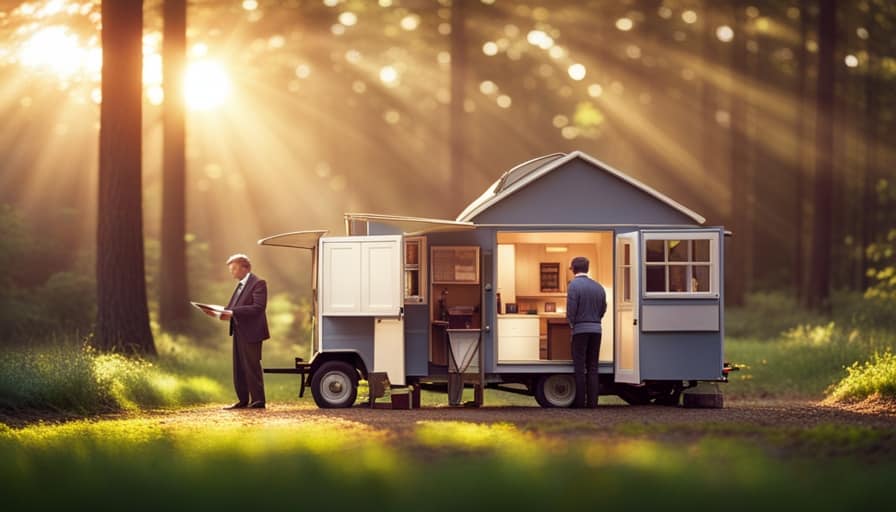
-
Customization considerations: Depending on the specific requirements of your tiny house, consulting with experts and manufacturers allows for customization. They can advise on factors such as weight distribution, axle placement, and tongue weight to optimize the trailer’s performance.
-
Compliance with regulations: Experts and trailer manufacturers are well-versed in local regulations and building codes. Consulting with them ensures that the wheel placement meets all legal requirements, giving you peace of mind.
Frequently Asked Questions
Can I Move the Wheels on a Tiny House Trailer to a Different Location?
Yes, you can relocate the wheels on a tiny house trailer. To determine the optimal wheel placement, consider the weight distribution and balance of the structure. Consult a professional to ensure proper alignment and safety.
Is It Safe to Relocate the Wheels on a Tiny House Trailer?
Relocating the wheels on a tiny house trailer raises safety concerns. To ensure stability and proper weight distribution, it is crucial to consult a professional and adhere to manufacturer guidelines.
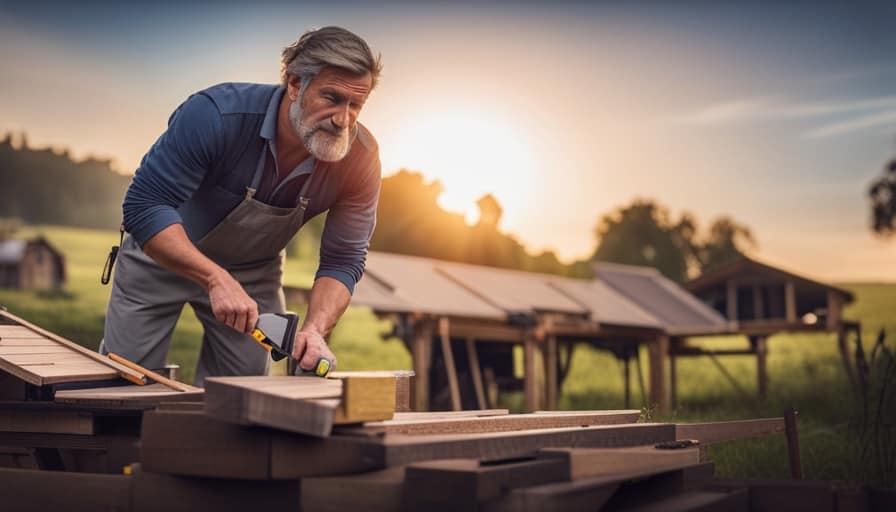
Are There Any Regulations or Guidelines Regarding Wheel Placement on a Tiny House Trailer?
Regulations on wheel placement for tiny house trailers are crucial for safety. Proper wheel positioning ensures even weight distribution and stability during transportation. Following guidelines helps prevent accidents and damage to the structure.
How Do I Determine the Ideal Wheel Placement for My Specific Tiny House Design?
To determine the ideal wheel placement for my tiny house design, I consider design considerations and weight distribution. By carefully analyzing these factors, I can ensure proper stability and balance for my tiny house on the trailer.
Can I Adjust the Wheel Position on a Tiny House Trailer After It Has Been Built?
Yes, the wheel position on a tiny house trailer can be adjusted after it’s built. This allows for flexibility in weight distribution and improved towing. Adjustable wheels offer benefits such as better stability and the ability to accommodate different tiny house designs.
Conclusion
In conclusion, determining the exact location of the wheels on a tiny house trailer is vital for ensuring proper weight distribution and stability. By examining blueprints, utilizing measurement techniques, and exploring visual indicators, individuals can accurately determine wheel positioning.
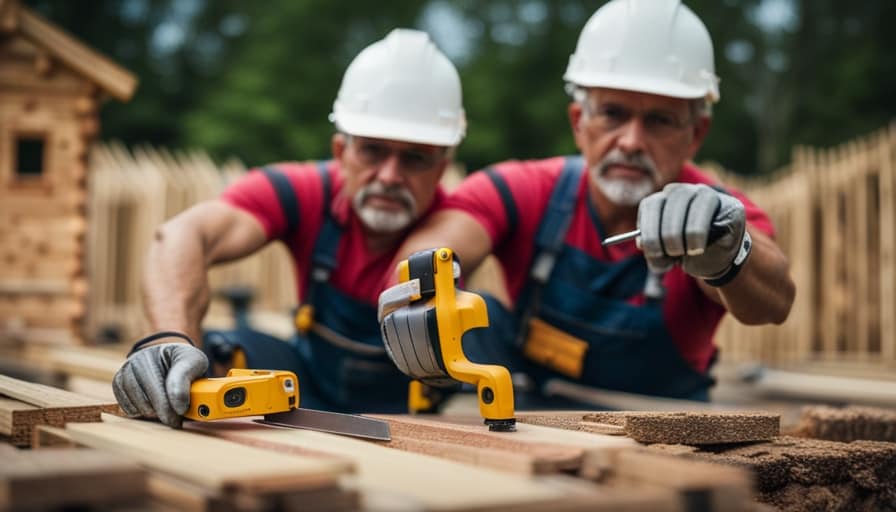
It’s fascinating to note that according to trailer manufacturers, approximately 80% of tiny house trailers have their wheels positioned within the first third of the trailer’s length, allowing for optimal weight distribution and towing performance.
I’m Theodore, and I love tiny houses. In fact, I’m the author of Tiny House 43, a book about tiny houses that are also tree houses. I think they’re magical places where imaginations can run wild and adventures are just waiting to happen.
While tree houses are often associated with childhood, they can be the perfect adult retreat. They offer a cozy space to relax and unwind, surrounded by nature. And since they’re typically built on stilts or raised platforms, they offer stunning views that traditional homes simply can’t match.
If you’re looking for a unique and romantic getaway, a tree house tiny house might just be the perfect option.
